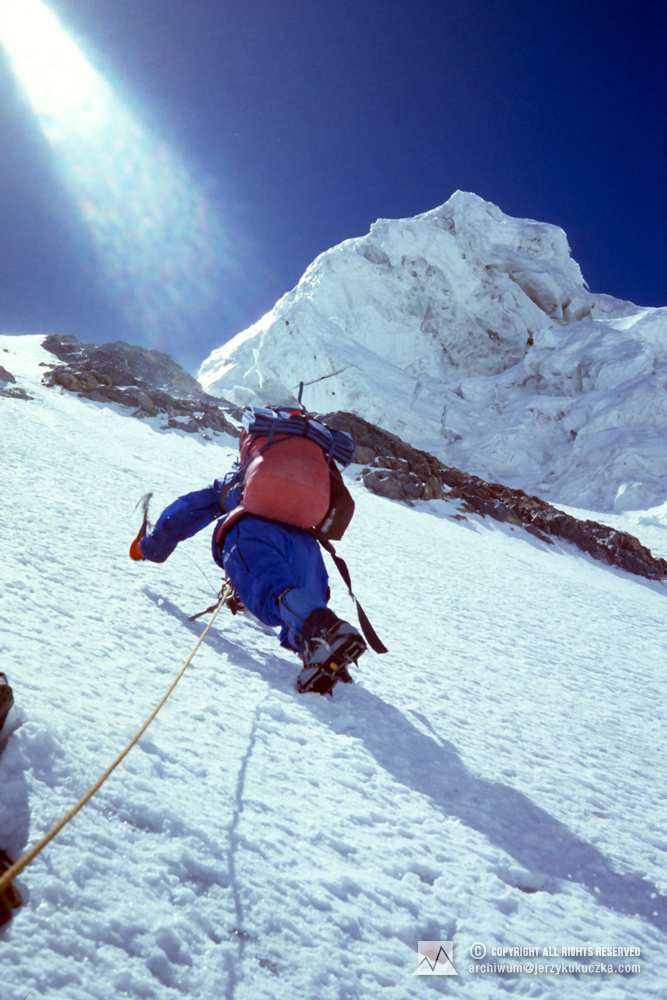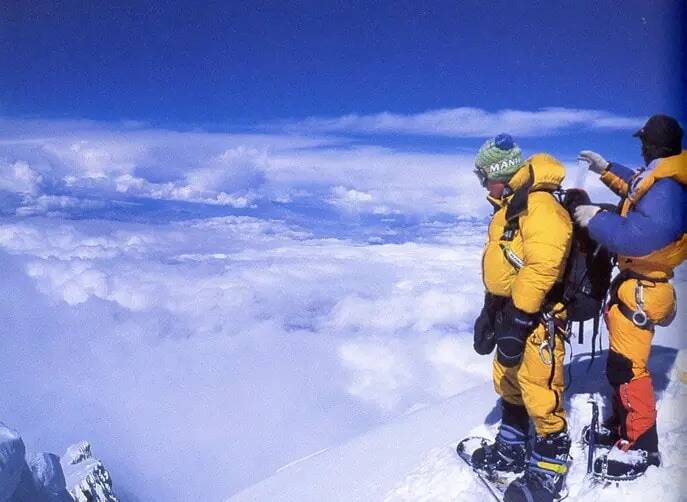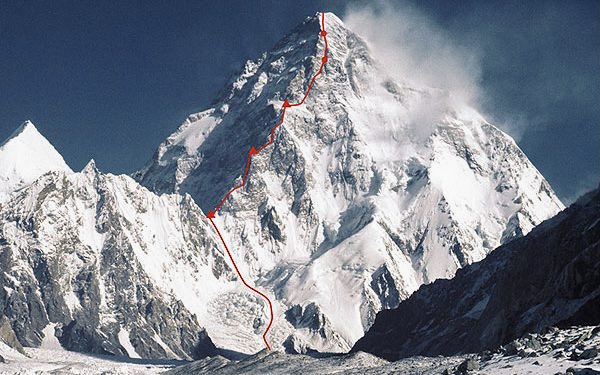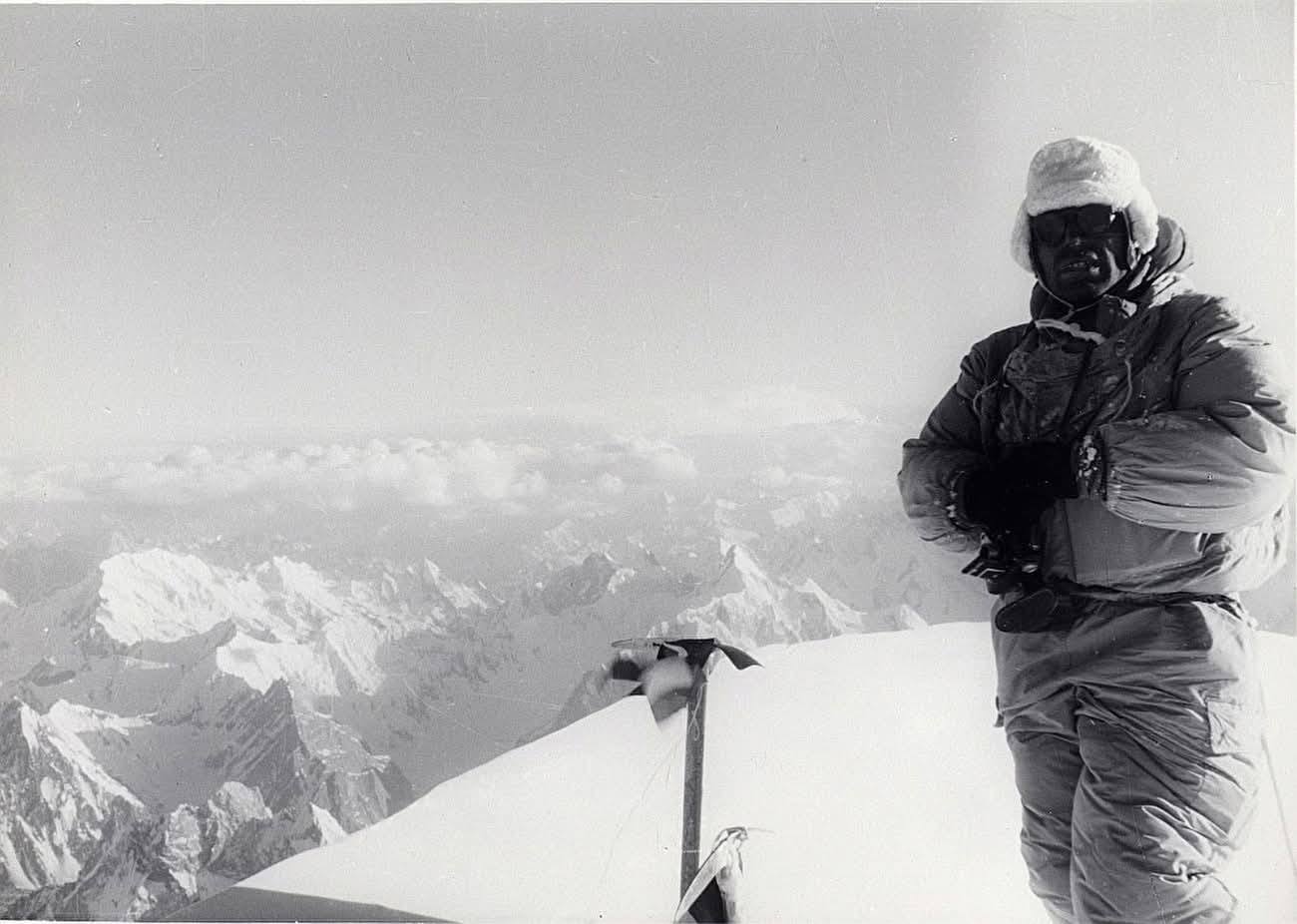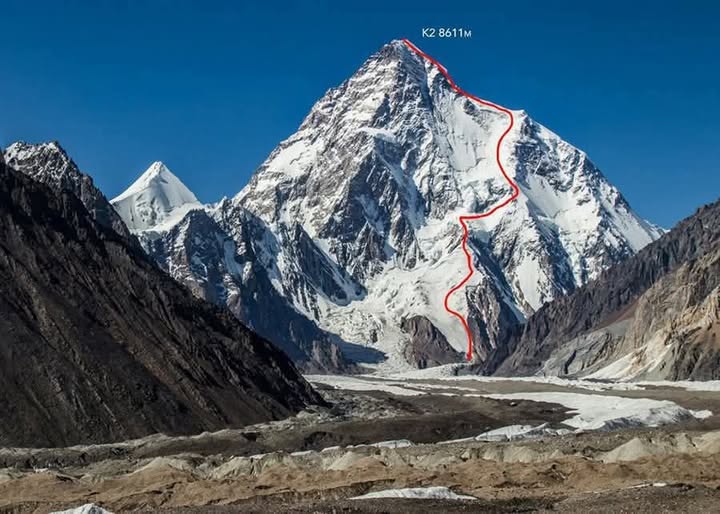In the summer of 1984, beneath the endless ridgelines of the Karakoram, two men set out on a route no one had dared. Jerzy Kukuczka and Wojciech Kurtyka, top Polish alpinists, visionaries of the high and cold style turned their eyes toward Broad Peak’s unclimbed northwest ridge.
The mountain was familiar. Broad Peak, 8,047 meters, stood in the shadow of its famous neighbor, K2. But few had truly explored its vastness. Since its first ascent 27 years earlier, only one route had ever been established. What Kukuczka and Kurtyka envisioned wasn’t just a climb it was a traverse of its triple crown: North Summit, Central Summit, and Main Summit. All in pure alpine style. No fixed ropes. No high camps. No support.
The plan was nearly broken before it began. Bad weather pinned them down. Acclimatization attempts on the south face and the standard route were thwarted, high winds, avalanche-prone slopes, and route-finding nightmares kept them below 7,300 meters. Weeks passed. Spirits sagged.
Then, finally on July 13, the skies cleared and a full moon hung above the Karakoram, then they began.
The first obstacle was brutal: a steep avalanche track was capped by séracs and two hard ice pitches up 55 to 60 degrees. By evening, they gained the crest of the ridge and bivouacked at 6,300 meters. It would be their only comfortable night.
The next two days, July 14 and 15, were a psychological war. The spur leading to the North Summit was a blade of rock and ice, exposed and steep. They climbed unroped, moving fast to beat the weather and the danger. Four pitches were too difficult — they belayed them, clinging to hope and marginal rock. The night bivouac was a snow ledge the size of a doorframe, carved by headlamp.
On the 15th, they reached the North Summit located at 7,600 meters and crossed onto the col at 7,300 meters. The central summit ridge now loomed ahead: jagged, technical, but more reasonable. They bivouacked again.
July 16. They tackled the ice slopes below the Central Summit up to 60 degrees and were unforgiving. Slowly, deliberately, they moved upward and crossed the Central Summit at 8,013 meters and began abseiling into the narrow col below the main summit.
It was a place cursed by memory. In 1975, three Polish climbers had died here in a storm while descending. This time, it wasn’t snow but a demonic wind that lashed the ridge. Five rappels followed, anchored to crumbling rock and rusted pitons. At one anchor, just forty meters above the col, they found the ice axe which was abandoned from that 1975 fall into the Sinkiang side then they bivouacked a fourth time at 7,800 meters battered by the gale. Still, the summit was not theirs.
At 10 a.m., July 17, they reached the top of Broad Peak. 8,047 meters with the third summit in their sky-straddling traverse. Finally, their traverse was completed.
Then the subsequent descent followed the standard route. But danger wasn’t gone, near Camp II, at 6,400 meters, Kukuczka clipped into an old fixed rope was snapped. He slid, accelerating toward death, until sheer instinct and crampons saved him. He clawed to a halt, breathless and shaken.
By the morning of July 18, they were down at Base Camp.
The route, strung along knife-edge summits, demanded total commitment. No easy exit. No rescue. But the reward was rare a shifting panorama of high peaks: K2 to the west, then the Gasherbrums rising with regal complexity. They moved through silence, above the known world, where only wind and will endured.


